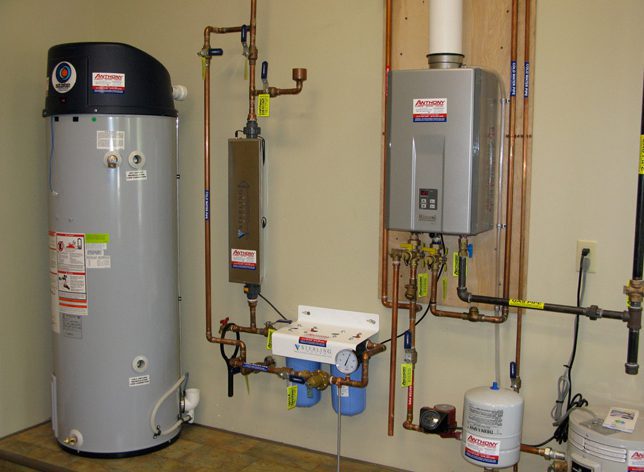Tips for Preventing Everyday Plumbing Problems in Your Home
Tips for Preventing Everyday Plumbing Problems in Your Home
Blog Article
Do you find yourself hunting for facts and techniques about 6 Common Plumbing Problems and How to Fix Them?

Introduction
Preserving a functional plumbing system is crucial for a comfy home. By taking safety nets, you can avoid common plumbing concerns that might interrupt your day-to-day live and sustain costly repair work.
Regular Maintenance Checks
On a regular basis evaluating your plumbing system is crucial for recognizing prospective concerns before they intensify. Check pipes, taps, commodes, and home appliances for leakages, deterioration, or indications of wear and tear.
See What You Flush
Be mindful of what you purge down your bathrooms. Stay clear of flushing items such as wipes, cotton rounds, sanitary items, and paper towels, as these can create obstructions and back-ups in your pipelines.
Correct Disposal of Grease and Food Waste
Dispose of grease, oils, and food scraps properly to stop build-up in your pipes. Avoid putting grease down the drain, as it can strengthen and trigger blockages. Make use of a filter in your kitchen sink to catch food bits and empty it regularly.
Display Water Pressure
Keep an eye on your water pressure to stop tension on your pipelines and home appliances. High water stress can cause leakages and damages gradually. Take into consideration setting up a stress regulator to keep ideal water stress throughout your home.
Safeguard Pipelines from Freezing
Throughout cold weather, take actions to prevent your pipes from cold. Insulate exposed pipelines, especially those in unheated locations like cellars and attic rooms. Allow taps to leak during freezing temperature levels to prevent water from freezing in the pipelines.
Address Leakages Without Delay
Resolve any type of leaks or leaks as quickly as you discover them. Also small leaks can waste water and trigger damages to your home in time. Tighten up loosened fittings or replace worn-out seals to avoid leakages from worsening.
Be Mild with Plumbing Fixtures
Avoid utilizing extreme force when operating plumbing components such as taps and valves. Misuse can trigger deterioration, resulting in leaks and various other malfunctions.
Regular Drainpipe Cleaning
Set up routine drain cleansing to prevent build-up of hair, soap residue, and other particles. Use a drain snake or enzymatic cleaner to eliminate clogs and keep smooth drainage.
Mount Water Softeners
Consider installing a water conditioner if you have hard water. Difficult water can create mineral buildup in your pipelines and devices, resulting in reduced water flow and effectiveness.
Educate House Members
Enlighten everyone in your family regarding proper plumbing methods. Teach them what ought to and shouldn't be purged or gotten rid of down the drain to prevent preventable plumbing troubles.
Verdict
Protecting against usual plumbing concerns in your house calls for persistance and routine maintenance. By adhering to these safety nets, you can make sure that your plumbing system operates smoothly and stay clear of expensive repair work in the future.
Expert Tips for Preventing Common Plumbing Issues
Keep Drains Clear and Functional
Regularly clean drain covers and hair-catching devices to eliminate debris and prevent buildup. Avoid disposing of grease, oil, or coffee grounds down your drains, as they can congeal and accumulate over time, creating obstructions. Consider using a biodegradable drain cleaner periodically to break down organic matter and maintain clear pipes. Prevent and Identify Leaks Early
Regularly inspect visible plumbing connections, pipes, and fixtures for signs of moisture or corrosion. Fix loose connections or replace damaged components as needed. Install water leak sensors in high-risk areas such as under sinks, near water heaters, and around washing machines to provide early warning of potential leaks. Monitor your water bill for sudden increases in usage, which may indicate a hidden water leak. Protect Plumbing from Freezing Temperatures
Allow faucets to drip slightly during extremely cold weather to prevent freezing and pressure buildup inside the pipes. Seal gaps and openings in walls, doors, and windows near plumbing to prevent drafts from reaching your pipes. Maintain Optimal Water Heater Performance
Schedule annual professional maintenance of your water heater, including checking pressure-relief valves, flushing sediment buildup, and inspecting for corrosion or leaks. Maintain the manufacturer-recommended temperature setting, typically around 120°F (49°C), to optimize energy efficiency and prevent scalding. Consider installing an expansion tank in your system if you have a closed-loop water supply, which prevents excessive pressure buildup and potential water heater failure. https://www.climatecontrolkc.com/blog/plumbing/tips-for-preventing-plumbing-issues/
:max_bytes(150000):strip_icc()/what-is-under-the-bathroom-sink-3973574-03-c2c800c743054899aca9bdcc0535db34.jpg)
Hopefully you enjoyed our part about 6 Common Plumbing Problems and How to Fix Them. Thanks a ton for spending some time to read through our piece. If you enjoyed our blog entry kindly make sure you remember to share it. I thank you for your readership.
Or Book Technician Here Report this page